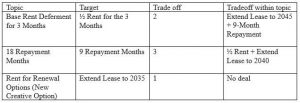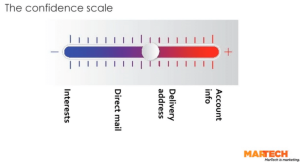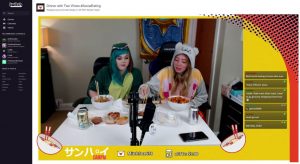
Email marketing is hands-down the best way to turn one-time shoppers into loyal, long-term customers. That’s why 80% of brands rely on it to drive customer retention, and another 56% of them say email marketing is the most effective way to reach retention goals.
There are a lot of reasons why email marketing drives retention. It’s more personal and direct than other marketing channels, and people love receiving email from their favorite brands. It’s ideal for building trust and developing customer relationships that outlast any one transaction.
That’s why email marketing is perfect for driving retention. But let’s get specific: what types of emails work best for driving retention? In our recent webinar, we teamed up with Bronto to discuss which types of email campaigns get your customers to stick around.
4 types of emails that drive retention
Welcome emails
A good welcome campaign does three things: introduces your brand, inspires your customer to take action and incentivizes them to take that action. It’s your chance to make a great first impression on a new customer and keep them coming back for more.
The very first email that a new customer receives should include any offer you promised in your sign up form (a limited time coupon code or discount, for example). You can also include a brief introduction to your brand and invite people to follow you on social. This is where a live social feed with your most recent Twitter or Instagram posts comes in handy.
To further take advantage of your welcome emails, consider adding a live poll that asks your new customers about their shopping preferences. Then, follow up with an email based on those preferences. This is an easy and fun way to begin collecting data on your audience.
When executed correctly, a welcome series can be a big revenue-driver. 33% of Bronto’s email marketing revenue comes from their welcome series!
Cart recovery emails
Cart recovery emails should be part of any online retailer’s email campaign. Considering that 68% of online shoppers will abandon their cart, retailers can’t afford not to use them.
There are three steps to creating a successful cart recovery email. First, keep your copy short and to the point. Gently remind your customer that they have an item remaining in their cart, and all they need to do is click to complete their purchase.
Next, use a clear call-to-action to help your customer return to their shopping cart. There should only be one CTA, and it should lead directly to the customer’s cart – not simply back to your website.
Finally, if your company offers free shipping, easy returns or direct access to customer support, include a brief description to let your customer know. Sometimes this information can be the little push they need to place an order.
Loyalty emails
Loyalty emails provide an awesome opportunity to surprise and delight your customers. Using customer data, you can create a highly personalized experience, like Spotify did in their artist wrap-up campaign.
If you have a points-based rewards program, email is one of the best ways to update your customers on their rewards and points status. Using contextual marketing, you can automatically pull in up-to-the-minute points data to give customers a heads up that they’re about to enter a new tier level, or that they’re eligible for new rewards.
To take it a step further, you can use data visualization to help your customers visualize their rewards program data. To do that, you can automatically pull in data – their most frequently purchased items over the course of a month, for example – and display a chart with those frequent purchases.
Post-purchase emails
Continuing to send your new customers relevant content after they’ve made a purchase is key for creating successful post-purchase emails. You can send them educational content based on their recent purchase to get them excited about using their products and make them feel part of an exclusive club.
You can also optimize your transactional emails to include live shipping information after they’ve made a purchase. This saves the hassle of looking up their tracking information and gives you the opportunity to upsell in that very email. You could even automatically pull recommended products into your live tracking email that are based on your customer’s recent browsing or purchase behavior.
Lastly, you can use post-purchase emails to reactivate customers you haven’t heard from in a while. Send them a discount on their next purchase to encourage them to buy again, or invite customer feedback so you can provide an even better experience.
Your email marketing retention checklist
Not sure where to begin? These takeaways can be incredibly impactful for driving customer retention with email marketing:
Use live and progressive polling to drive engagement and collect valuable customer data: You can do this in your welcome series to start collecting data early on. This will help you send relevant, useful email content to your customers.
Use data on your customer to create highly personalized campaigns: Once you have data on your customers (shopping preferences, location, most purchased-items and purchase frequency are all good starting points), you can use that data to tell your customers’ story via email.
Include welcome, cart recovery and post-purchase emails in your email marketing toolbox: These three types of emails are the bare minimum that all retailers should have. Once you have these in place, you can build out your campaigns.
Look for opportunities to maximize your transactional emails – remember the 80/20 rule: When using transactional emails, 80% of the content should be devoted to helping the customer – i.e., in the form of live order tracking. The remaining 20% can be used to upsell or promote products based on your customer’s shopping history.
Want to learn more about driving customer retention with email marketing? Check out our webinar recording, How to Drive Customer Retention with Email Marketing.
Digital & Social Articles on Business 2 Community(83)
Report Post






